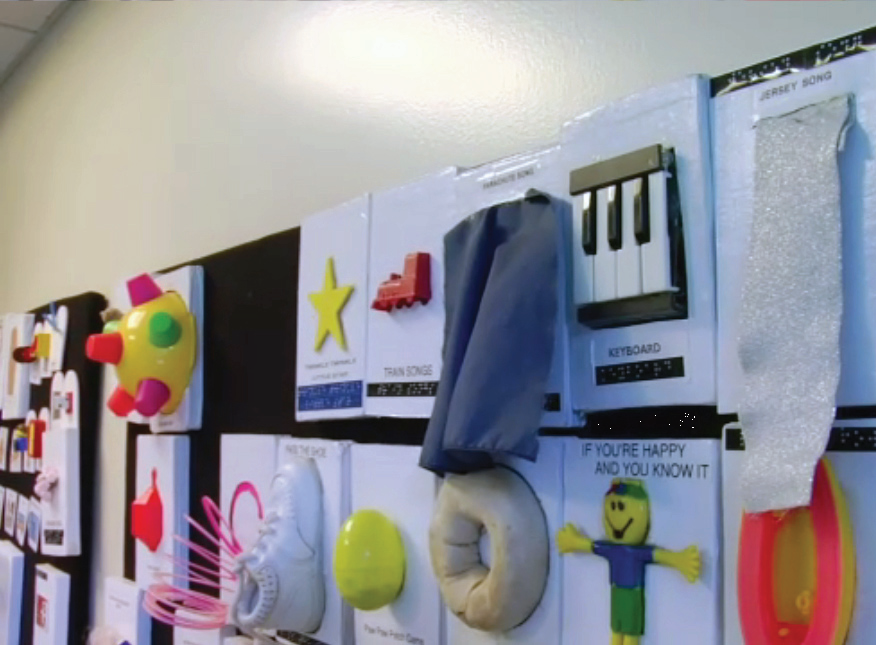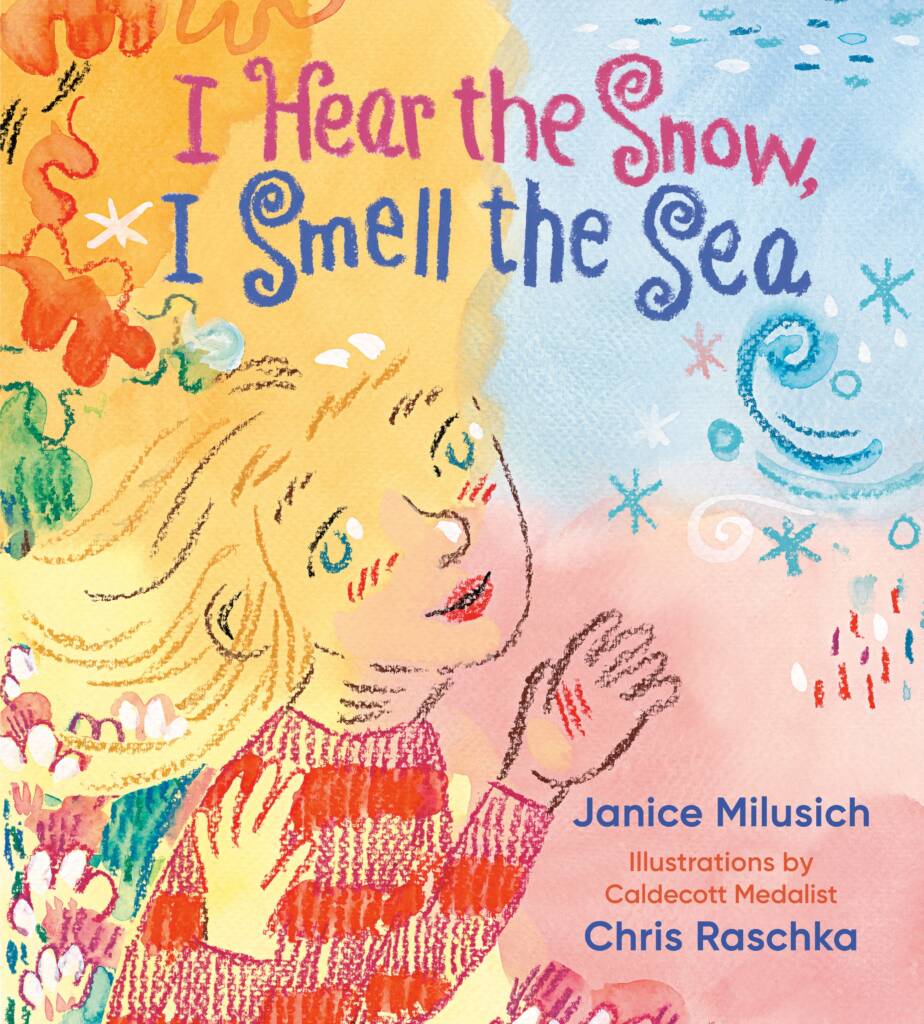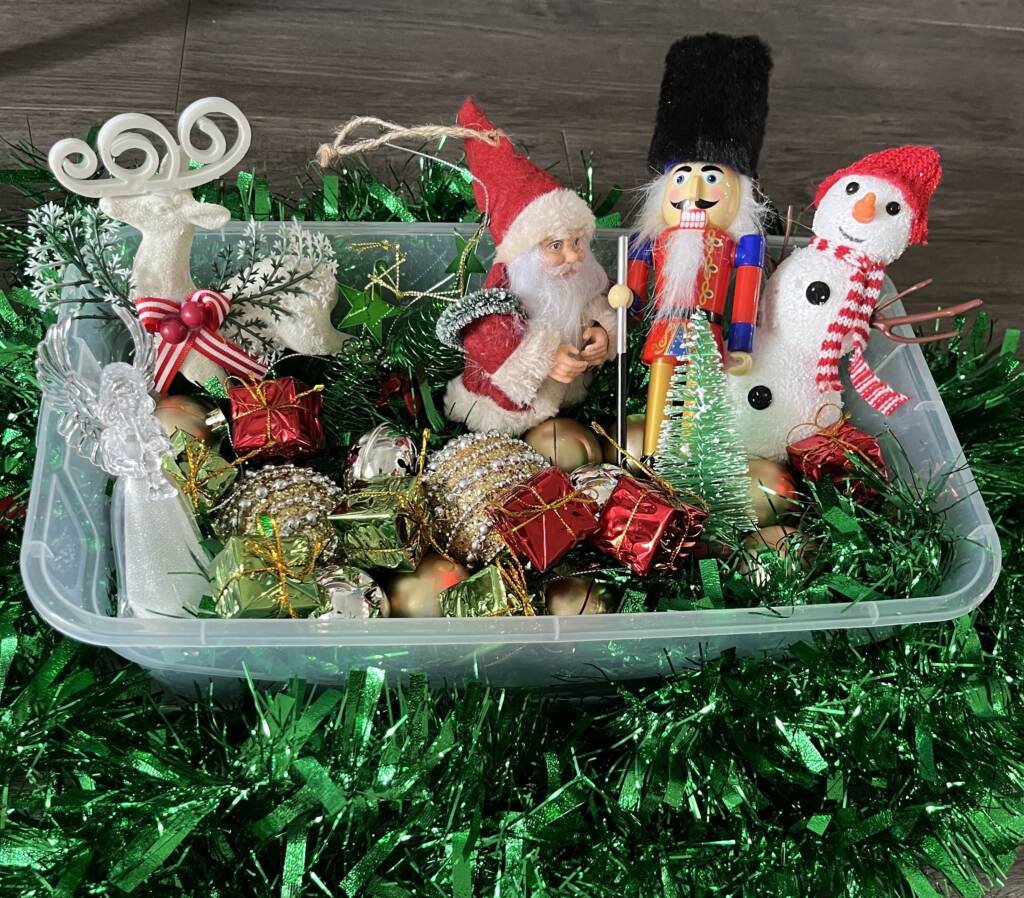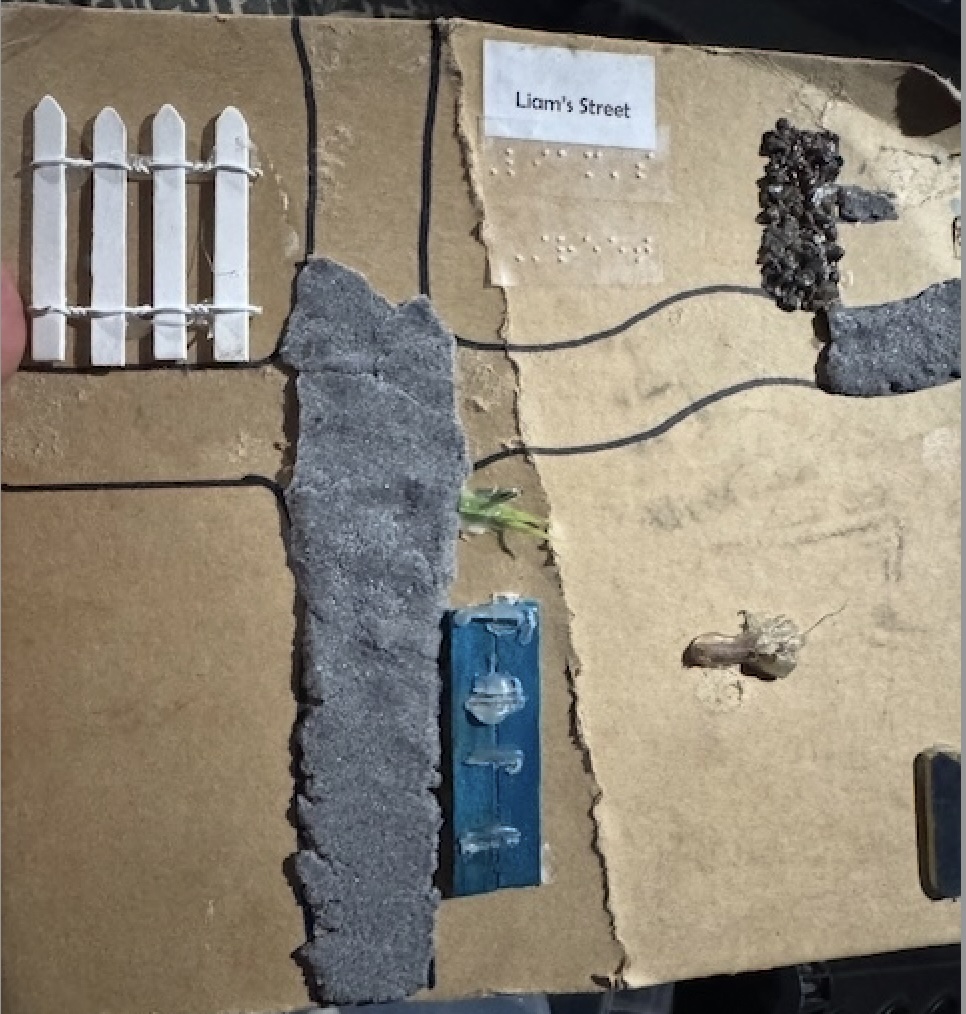All children, including those with multiple disabilities, should be given an opportunity to include “writing” in their daily routine. As a means of expression, writing may include the use of objects and partial objects to tell about an experience. This can be done by creating a tactile experience story or an object book, in which objects are attached to a page or a board. The objects or partial objects must be meaningful to the child and ideally would have been part of the actual activity (i.e. no cotton balls for clouds!). For example, an outing to a restaurant may include a straw or a napkin glued to page, or handful of popcorn. A coin may be attached to a different page to tell about paying for the snacks. To learn more about their creation, see Experience Books and Object Books.
Beginning emergent writing activities may also involve opportunities to manipulate a variety of conventional and non-conventional writing tools, art supplies, and craft materials. Grasping aids may be helpful for some students with motor impairments, and a textured surface can be used to make writing activities more meaningful. Mary Ann Demchak and Marty Elmquist provide suggestions for involving children with significant disabilities in emergent writing activities in Promoting Literacy through Emergent Writing (Nevada Dual Sensory Impairment Project, April 2006).
Tangible Symbols
Megan Mogan, Speech Language Pathologist and Deafblind Specialist, has shared numerous examples of using tangible symbols in the writing process with students with multiple disabilities. See PE Symbol Song.
Many students who are blind or visually impaired with additional disabilities use tangible symbols in a calendar system. It should be remembered that tactile symbols can and should also be used expressively, for the student to make choices, discuss events of his or her day, and communicate about experiences. Pointing to an object or a picture to make a choice enables a child to communicate his or her wants and needs. This ability to control one’s environment is a significant step toward independence, and it is also a helpful step on the path to literacy. A child may be presented with actual objects representing different activities or with tangible symbols, which are three-dimensional representations that may be glued to a card. As the child develops a deeper understanding of objects and the activities they represent, these objects or symbols can then be used in other literacy activities, such as the creation of simple books.
To learn more about Tangible Symbols, see the Perkins Webcast The Use of Tangible Symbols to Support the Development of Communication by Elizabeth Torrey with the accompanying handout or Tangible Symbol Systems Primer by Charity Rowland and Philip Schweigert.

Additional Resources
For more information on writing skills, see the following articles:
Focus on Literacy, with Particular Focus on Writing Skills
From Vibrations Newsletter, Colorado Services for Children who are Deafblind
This edited version of the original newsletter includes information about assistive technology, as well as instructional strategies. It includes information on process writing, pairing modeling writing with assistive technology, adapted writing tools, strategies for beginning sentence and paragraph writing, and writing and AAC (Augmentative and Alternative Communication).
Writing Literacy for Children with Combined Vision and Hearing Loss This section of the NCDB site offers strategies, related skills, examples, video clips, articles, and additional resources on writing for children with a combined vision and hearing loss.
Predictable Chart Writing
Center for Literacy and Disability Studies, University of North Carolina
Predictable Chart Writing is a shared, group writing activity that results in a classroom book. Engaging in writing is typically a challenging and often abandoned activity for students with significant disabilities. This writing activity has been adapted for students who are unable to speak and unable to hold a pencil. It has been modified from the activities described in Predictable Chart Writing, by Williams, Carson & Dellosa.



